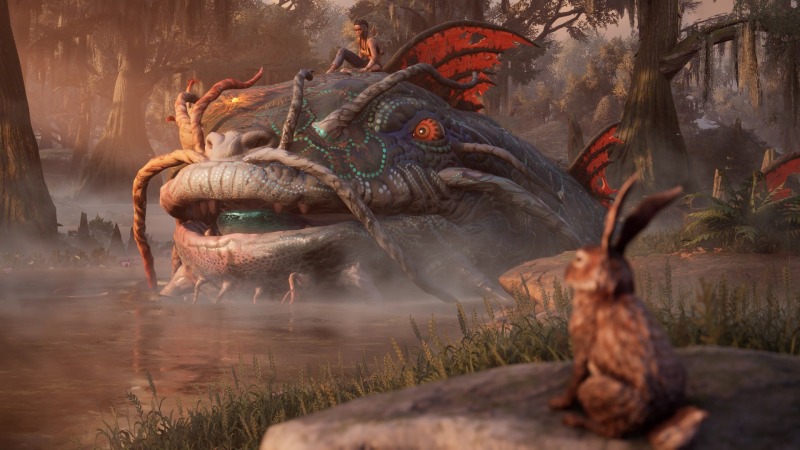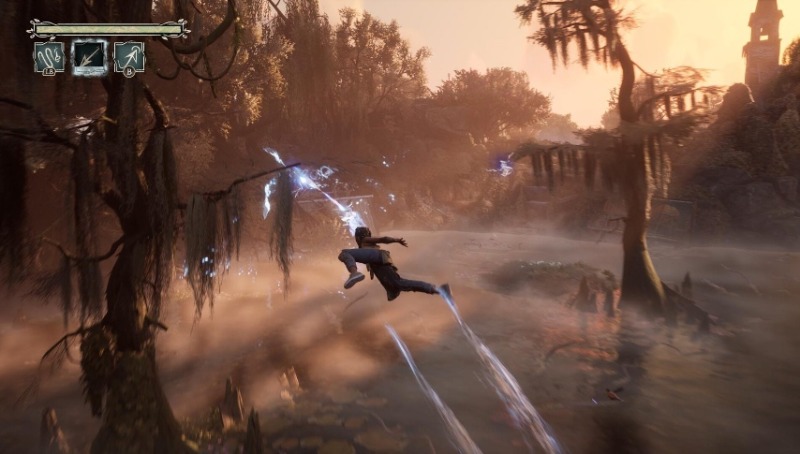South of Midnight Knows that the South Will Always Be Haunted By Its Past

Two months ago I played a single chapter of South of Midnight, a new game about how life becomes legend and how legends cling to the South like Spanish moss. I wrote about that 90 minute slice of the game here at Paste, praising its story and its approach to magical realism, but noting that its most game-like moments—its combat and its platforming—felt begrudging, perfunctory, like something awkwardly grafted onto the game out of commercial concerns—not because they serve the story the designers at Compulsion Games wanted to tell, but because it’s a videogame, and people expect videogames to be about running and fighting and carrying on. I’ve now played the rest of South of Midnight, all 15 of its chapters, over a span of 12 or so hours, and honestly, everything I wrote in that preview applies to the full game. So, uh, go read that, if you haven’t. It’s not that bad, I promise.
If you’re weirdly averse to clicking links, or already read that piece, or want to learn stuff you don’t already know about the game—or if you’re one of my parents, or my mother-in-law, who all claim to read every word I write—I reckon you can keep on reading. It’s not like I have any sway over your internet activities, or anything. You’re going to do what you’re going to do, and I respect that, even if I don’t always understand it. Either way, as ever, thanks for your time and your support.
South of Midnight doesn’t give an exact location for Prospero, the small dying town it’s set in, but it’s clearly somewhere in Louisiana. Cajun accents abound, one character played football for a Louisiana college, everything’s built on swampland, and a hurricane’s about to flood the whole place. Local high school track star Hazel Flood and her mom Lacey are fixing to head out to a hurricane shelter when disaster strikes: their home is washed away by the rising water with Lacey still inside. Hazel’s journey to rescue her mom becomes a magical communion with the history and folklore of Prospero as she helps atone for the hidden sins of her neighbors and the secret tragedies within her own family, and it’s all fascinating stuff—until you have to spend five minutes smacking some floating bad guys around.
Sometimes you can tell when game designers aren’t that enthusiastic about a part of their game. That appears to be the case with South of Midnight’s combat. These fights are broken up into short, discrete chunks of action enclosed within small circles of impenetrable fog, with two or three staggered waves of enemies to destroy. There are only a handful of enemy types, and you learn everything you need to know about each individual type the first time you fight one. It stops introducing new enemies roughly halfway through the game, so for the second half you’re fighting your way through repetitive, interchangeable encounters, solely so you can accomplish something to unlock the next bit of story. South of Midnight only ever switches up its battles when you’re facing one of its few bosses, which are long, multi-phase affairs that require a good grasp of Hazel’s various skills. The boss fights have a bit of a Zelda feel to them—the rule of three abounds—and are fine challenges that directly play off whatever story that level is focused on. The regular encounters are nothing more than speed bumps, though; their only purpose is to make sure you know how to fight before facing a boss.
Fortunately Hazel’s suite of acrobatic movements doesn’t always feel as uninspired as the fighting. If you’ve played a 3D platformer in the last, say, 20 years you’ll recognize most of what goes on here. When she’s not walking or double-jumping Hazel has to climb up walls and cling to ledges, or use a magical handheld parachute to slowly glide over the land, or wall-run between billboards or cliffs. It’s Uncharted, it’s Assassin’s Creed, it’s Prince of Persia—it’s the classic platforming songbook covered once again, but it at least keeps you moving forward, unlike the momentum-stopping fight scenes. And, speaking of songs, these moments of traversal at the end of each chapter are typically accompanied by original folk, country, or blues songs, with lyrics that reflect the current story; the songs aren’t always that good, but it’s a beautiful little world-building note and a unique hook that further steeps South of Midnight in its Southern milieu.

-

-

-

-

-

-

-

-

-

-

-

-

-

-

-

-

-

-

-

-

-

-

-

-

-

-

-

-

-

-

-

-

-

-

-

-

-

-

-

-








































